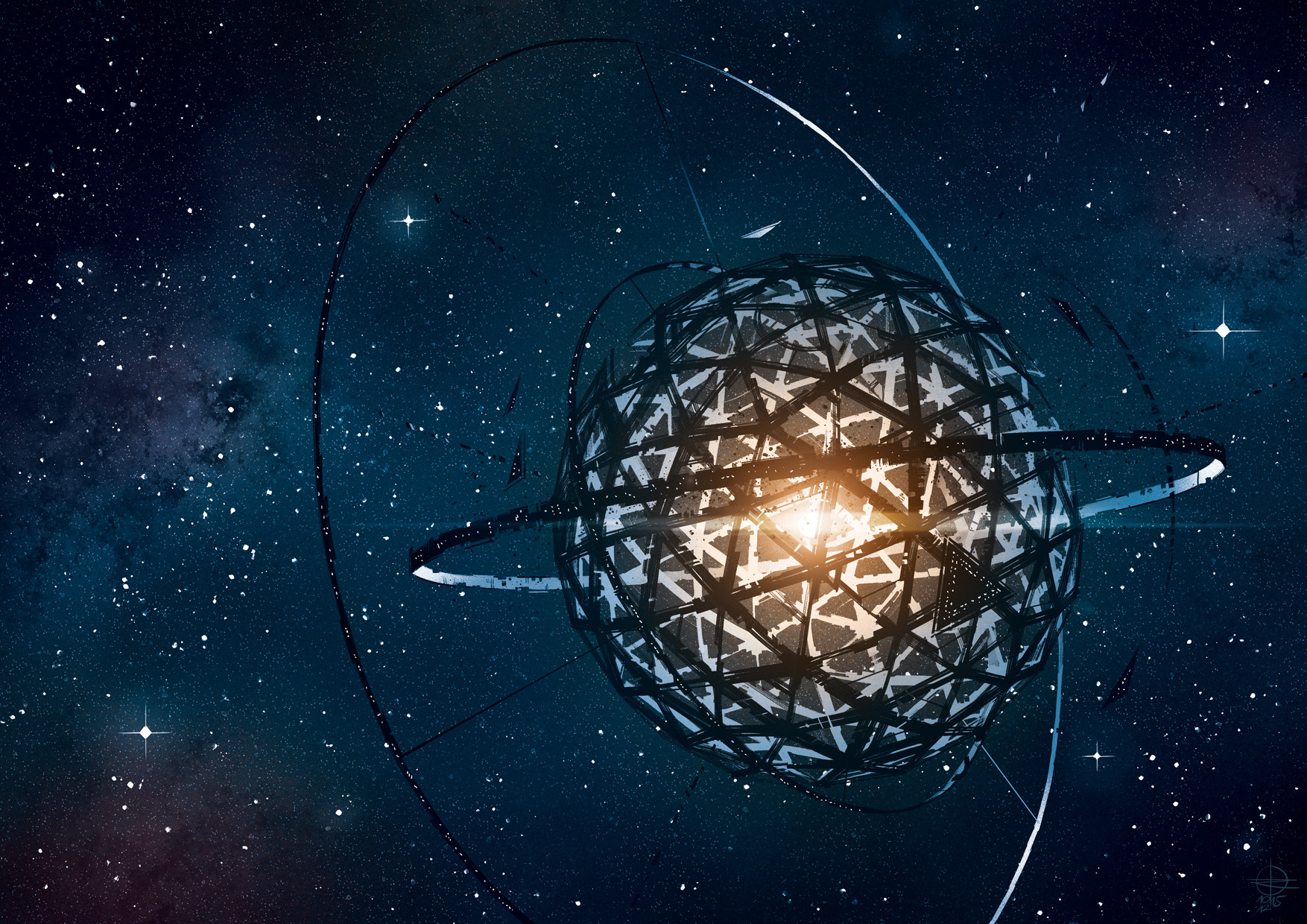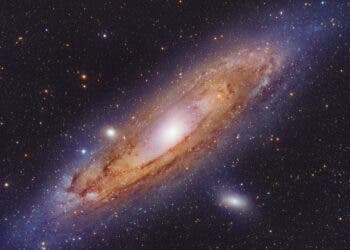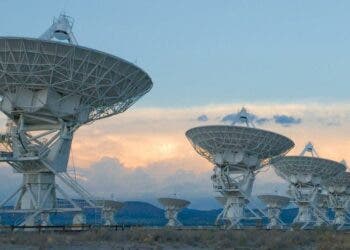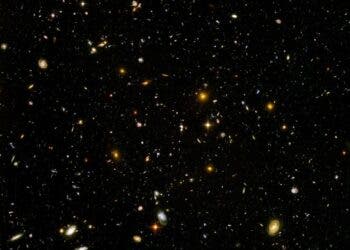The Search for ExtraTerrestrial Intelligence (SETI) is more than just pointing our telescopes to distant stars hoping that some habitable planet is orbiting it. It also has to do with imagining all possibilities, but more importantly the plausible ones.
In a recent study, scientists analyzed the possibility of an advanced civilization harvesting energy from a black hole. The idea comes from the concept of the Dyson sphere, a hypothetical structure built around a star by an advanced civilization to collect energy remotely from it.

What is a Dyson Sphere?
Dyson spheres were proposed by Freeman Dyson in 1960. The concept tries to explain how advanced civilizations could satisfy their ever-growing thirst for energy as they explore the stars.
The more advanced the civilization, the more energy it may require to sustain itself. At some point, the only realistic source of energy becomes the star itself, so to harvest the most possible energy, you build a Dyson sphere around it.
The sphere was first thought of as a shell orbiting the Sun. Later, more plausible structures were suggested, like the Dyson swarm which, as the name suggests, is a group of objects forming the orbit required for the energy collection. The other suggestion is the Dyson bubbles, which is also a swarm of objects, but stationary relative to the energy source.
Kardashev scale
So what type of civilization would use a Dyson sphere? Based on how far they have spread and how much energy they would use, they can be roughly split into three categories, using the Kardashev scale defined by Soviet astronomer Nikolai Kardashev
- The Type I civilization (a planetary civilization) consumes around 4 x 10^16 Watts;
- The Type II civilization (a stellar civilization) consumes around 4 x 10^26 Watts;
- and Type III civilization (a galactic civilization) consumes around 4 x 10^37 Watts.
So in general terms, to get from a planetary to a stellar civilization, you’d need about 10^10 times more energy — or 10,000,000,000 times more energy to get to the next stage of civilization. That’s where the Dyson sphere comes in.
The Dyson sphere would be only possible with the Type II and III civilizations. Type II would be the ones capable of harnessing energy from their parent star, while Type III is thought to be a race apt to consume energy from multiple stars in their own galaxy. Mankind is still not even a Type I yet, we’re probably around 100-300 years from that. But that doesn’t mean we can’t think about it.
Different sources
In the recent study, scientists considered different types of energy sources for a promising Type II civilization. One energy source could be the inverse of a Dyson Sphere, where the civilization would be surrounded by the source itself. In this case, the best candidate is the Cosmic Microwave Background (CMB).
Your position in the universe does not matter, wherever you are the CMB surrounds you bringing photons from all directions of the sky in the microwave spectrum.
The CMB nowadays is close to the lowest possible temperature (at 2.73 K) but it was much hotter at the beginning of time. As the universe expanded, the CMB cooled down — which is a good thing for life in the universe. The universe became habitable when it was 300K, so if you consider a civilization formed during that epoch it could get an advantage from its energy.
A civilization able to harvest energy from the CMB would have to reject waste energy into a black hole. Crazy as it may sound, this is obeying the laws of thermodynamics and falls within the realm of reason. However, the researchers concluded that the amount of energy made from CMB, even if it was from a younger universe, would not be enough to sustain a Type II civilization.

Credits: NASA’s Goddard Space Flight Center/Jeremy Schnittman.
What about the black holes, how could you extract energy from a black hole using a Dyson swarm? Aren’t black holes supposed to absorb everything, including light? Turns out, yes and no — there still potential sources of energy around a black hole.
The team considered Hawking radiation as one of the possible sources of energy. Stephen Hawking proposed that contrary to popular belief at the time, black holes don’t suck everything in — they let some radiation escape. This is called Hawking radiation.
Around the event horizon, the threshold around the black hole where even light can’t escape, there are still some virtual particles: pairs of a particle and an antiparticle created from quantum fluctuations. The strong gravitational field from the black hole separates the pair; one gets inside the event horizon, and the other is emitted as Hawking radiation.
If a Type II civilization could build a Dyson sphere around a black hole to use the Hawking radiation, its luminosity wouldn’t be sufficient.
The accretion disk, on the other hand, could be a more plausible candidate. An accretion disk is a structure (typically shaped like a disk) formed by dust and other diffuse material, orbiting around a central body — in this case, a black hole.
Being the region in which friction heats up a large number of materials swirling around the event horizon. With enough heat, a Type II civilization could obtain what they need, even if the black hole is not so large. For a Type III civilization, things would not be so difficult technology-wise, but the accretion disk would have to belong to an intermediate-mass black hole to produce enough energy.
Of course, deciding on where the place the Dyson swarm is not an easy decision. Too far away from the source would reduce its efficiency, but too close to the source you’ll need materials that can survive temperatures up to 2,700 degrees Celsius. You’ll need to consider the number of objects placed to collect the energy and how much of the energy can be transferred.
Detecting Type II or Type III civilizations
If such a civilization would be undergoing this type of energy harvest, would we even know?
At our current level of technology, finding civilizations like those described here would require some tricks. The best way is to look at the waste heat. Just like our car’s engine, some energy must be rejected from the machine.
First, you look for the best candidates and search for an unusual signal. Of course, that sounds far easier than it actually is. If we are too close to the black hole, the brightness of the disk could make it hard to see the wasted energy. Another problem is everything in our path — the Milky Way, star formation, dust — all these objects are noise in our data, obfuscating our observations.
All in all, we kind of (maybe) have the technology to detect a Dyson sphere, if there is any civilization around that uses one. But even if we were to detect it, we’ll have to try to solve another SETI puzzle: how do we talk to them?
The study was published in MNRAS.






